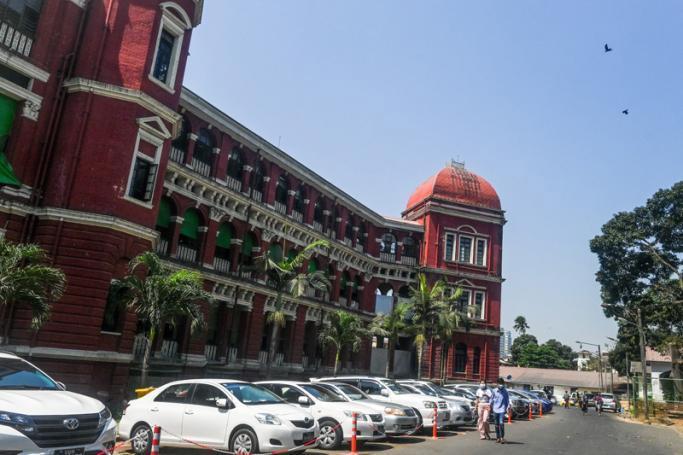The Covid-19 pandemic has brought forward the role of the governments in not only addressing the health crisis but also on how to address issues of vulnerability and disruptions that the population has faced due to the restrictive measures related to public events, transport, trade, businesses and stay at home orders during the past three months to contain the spread of the virus.
In several parts of the world, the pandemic curve is still ascending and countries and their people are facing hardships of unimaginable proportions. Social protection has been identified as a significant short to medium term intervention. Call for universal basic income and social protection for all have come to the fore of conversations among economists, policymakers and activists across the globe.
Several advanced, as well as emerging economies, have identified the need for supporting the poor and vulnerable as well as the businesses as a policy response in order to stave off the adverse downturn of the economy. Both on the supply as well as the demand-side stimulus has been proposed. And this has opened up the limitations of market based economic development approach which could not cope with the impact of the pandemic which has not spared any sector.
The increased role of the government in the economy can be seen from the way countries have responded swiftly by providing social protection to the poor and vulnerable during the pandemic. A global real-time review on social protection response of countries, compiled by World Bank and UNICEF staff, has identified that currently 195 countries/territories have planned or introduced social protection measures in response to COVID-19. Cash transfers, universal one-off cash disbursement, child care support and social pensions have been the measures taken by countries as social assistance programs to meet the needs of the vulnerable. Apart from these, in-kind food/vouchers for food, and school feeding programs and public works programs (food for work, cash for work) have also been initiated in order to stabilize the families. These support measures, ranging from 1 month to 12 months (with an average of 3 months) across the globe are estimated to reach to about 1.7 billion people (costing 0.4% of global GDP). While the amount of assistance may vary depending on the stage of development of the country, it is important to underscore that massive government intervention to stabilize incomes of the people is an important element of COVID-19 response across most countries. New stimulus measures in an advanced economy like the USA included cash transfers involving an average one-off payment of US$1200 to adult member and US$500 for a child to low earning families, emergency food stamps assistance, subsidized utility payments, paid sick leave and emergency withdrawals of old-age pension contributions, etc. In the USA new cash transfers are expected to reach 24 per cent of the population.
Government of Myanmar is estimated to have reached 39% of its population with the social assistance programs announce as part of relief under the COVID-19 Economic Recovery Plan (CERP) which is estimated to be around USD 2 billion. It may be recalled that (CERP) has identified a series of measures like food grains assistance for the poor and needy, expansion of existing cash transfers and social security measures (health insurance) for workers. There has also been subsidy provided to utility bills to reduce the economic stress of vulnerable households
Data on social assistance coverage points out a massive increase in the number of beneficiaries being supported during the pandemic period. About 21 million people have been newly added to the social transfer programs. These include, 5 million beneficiaries of cash transfers, about 4 million under food assistance during water festival break and another 4 million under emergency food rations support apart from the beneficiaries of various other regular schemes. All these points out the fact that the government has been able to address some of the immediate needs of the people. In fact, East Asia and Pacific countries have recorded a social assistance reach of over 474 million people which is highest compared to the rest of the regions of the world.
Another set of social protection measures included social insurance and labour market-oriented interventions that are directly focusing on the working poor and those in the informal sector. These included paid sick leave, health care insurance support, pensions, social security contribution by government waiver/subsidy, and unemployment benefit. Global enumeration points out that several countries have taken these steps. About 64 countries have reported provision of unemployment benefits, 53 countries have taken steps to waive or defer social security contributions and 49 countries have offered paid sick leave to the workers. Myanmar has adopted two specific measures concerning social insurance viz., extending health insurance, medical and transport benefits to unemployed members of social security board and deferral of SSB contributions by employers. Given the large informal sector, these measures would not have benefited large sections of working poor.
Under worker focused labour market interventions countries have adopted included wage subsidy (67 countries), activation (training) measures (19), labour regulation adjustments (23) and shorter work time benefits (10 countries). While the Myanmar government has taken steps in terms of social assistance and social insurance interventions, there appears to be none in case of labour market support. This is one area that can be relooked as part of mid-course correction to the CERP as there are instances of a large number of migrant workers who returned to the villages from outside. Gradual opening and resumption of economic activities in Myanmar need to incorporate some of the labour market interventions in terms of skill mapping, matching skills to jobs and promotion of labour market flexibility measures which can help the employers.












